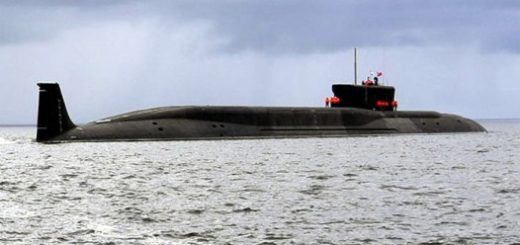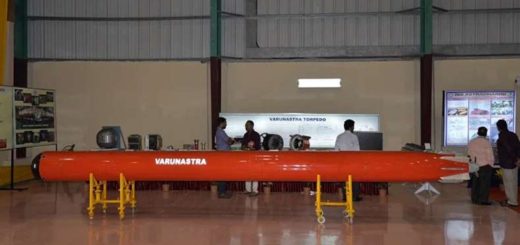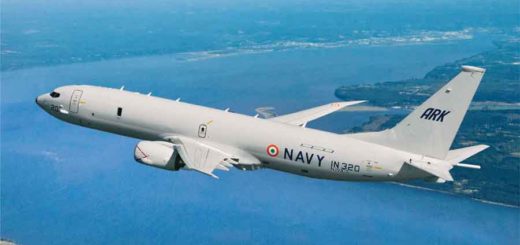SOURCE:
http://www.indiandefencereview.com/news/anatomy-of-china-pakistan-economic-corridor-project/
Geopolitics
By
16 Apr , 2016
It comes as a little surprise that
Pakistani army chief Raheel Sahrif
has blamed India for what he
describes as the efforts being
made by its long time regional
rival to undermine the high profile
US$46-billion China Pakistan
Economic Corridor Project
(CEPC).
…Baloch separatists and Baloch ethnic
groups have expressed themselves against
CPEC as well as Chinese involvement in
various projects in the province.
According to Sharif, this project highlighting
the economic cooperation between the China
and Pakistan, described as “all weather
friends” has raised eye brows in the region.
As envisaged now, the CEPC project that
seeks to link Pakistan’s southern port city of
Gwadar in the ethnically turbulent
Balochistan province with Kashgar, the
headquarters of China’s restive north western
province of Xinjiang inhabited by the Uighur
ethnic minority group has been considered a
win-win development for both the countries
. Going specific, Sharif said, “In this context, I
must highlight that India our immediate
neighbour, has openly challenged this
development initiative”. A well planned
network of all weather roads, railway lines and
pipelines forming part of CPEC is expected to
spur growth in the geographical stretches—in
both Pakistan and China– that are considered
far from well developed.
According to reports in the Pakistani media,
the first phase of CPEC, made up of a series
of power plants including coal based ones,
will be completed by the end of next year.
Incidentally, Pakistan and China had inked an
agreement in April 2015 to initiate work on
CPEC with a financial commitment of US$46-
billion which works out to 20% of Pakistan’s
annual GDP (Gross Domestic Product). The
two leading ethnic groups of Pakistan,
Balochs and Pashtuns, have opposed the
CPEC saying that it would, in the end, benefit
only politically influential Punjabis. But
Pakistani Government sources in Islamabad
stress the point that CPEC would benefit the
entire country by acting as a catalyst for the
expansion of the economy and business in a
big way.
The biggest geopolitical challenge for
Pakistan is how to comply with the Chinese
request for giving constitutional recognition to
the illegally held Gilgit Baltistan region
without inviting opposition from Kashmiri
separatist leaders on both the sides of divide.
The foolhardy decision of Nehru
Government in stopping the Indian
defence forces from crossing the
Kishan Ganga River helped keep
Kashmir dispute alive
Not surprisingly, China describes CPEC as a
vital component of its much publicised One
Belt One Road project that is aimed at linking
Europe and Asia to boost trade, commerce
and industrial production. On the other hand,
the strategically located Gwadar sea port, on
which China has a total control, would
provide China an easy access to the warm
waters of the Arabian Sea. And during the
times of crisis, Chinese navy can move its
personnel through the surface transportation
network of CPEC to Gwadr . from where they
can straightaway make it into the Arabian Sea.
Clearly and apparently, this is the most
significant geostrategic advantage that China
could derive by exercising control over
Gwadar.
On another plane, the oil and gas pipelines
originating from Gwadar can be utilised for
the transportation of crude and natural gas
secured from Iran. On a more practical
level, this approach would help China to
circumvent the highly vulnerable Strait of
Malacca for thetransportation of crude.
Growing US navalpresence in the
disputed South China Sea a major reason for
China looking at an alternative route for
transporting crude. Strait of Malacca choke
point forms a part of South China Sea.
Beyond registering the protest against the
CPEC run through Gilgit and Baltistan, an
integral part of the state of Jammu and
Kashmir that was occupied by Pakistan
through subterfuge in 1947,the Narendra Modi
led Government has done precious little to
break the illegal Pakistan-China nexus in the
Pak occupied Kashmir. It was the glaring
failure of the independent India’s first
government led by Pandit Jawaharalal Nehru
to re-annex Gilgit and Baltistan that opened
the pandora’s box of Kashmir .dispute. The
foolhardy decision of Nehru Government in
stopping the Indian defence forces from
crossing the Kishan Ganga River helped keep
Kashmir dispute alive. And the enormous
price that India continues to pay for this
thoughtless action is there for everyone to see.
The political leadership in New Delhi
http://www.indiandefencereview.com/news/anatomy-of-china-pakistan-economic-corridor-project/
Geopolitics
Anatomy of China-Pakistan
Economic Corridor Project
By
Radhakrishna Rao
16 Apr , 2016
It comes as a little surprise that
Pakistani army chief Raheel Sahrif
has blamed India for what he
describes as the efforts being
made by its long time regional
rival to undermine the high profile
US$46-billion China Pakistan
Economic Corridor Project
(CEPC).
…Baloch separatists and Baloch ethnic
groups have expressed themselves against
CPEC as well as Chinese involvement in
various projects in the province.
According to Sharif, this project highlighting
the economic cooperation between the China
and Pakistan, described as “all weather
friends” has raised eye brows in the region.
As envisaged now, the CEPC project that
seeks to link Pakistan’s southern port city of
Gwadar in the ethnically turbulent
Balochistan province with Kashgar, the
headquarters of China’s restive north western
province of Xinjiang inhabited by the Uighur
ethnic minority group has been considered a
win-win development for both the countries
. Going specific, Sharif said, “In this context, I
must highlight that India our immediate
neighbour, has openly challenged this
development initiative”. A well planned
network of all weather roads, railway lines and
pipelines forming part of CPEC is expected to
spur growth in the geographical stretches—in
both Pakistan and China– that are considered
far from well developed.
According to reports in the Pakistani media,
the first phase of CPEC, made up of a series
of power plants including coal based ones,
will be completed by the end of next year.
Incidentally, Pakistan and China had inked an
agreement in April 2015 to initiate work on
CPEC with a financial commitment of US$46-
billion which works out to 20% of Pakistan’s
annual GDP (Gross Domestic Product). The
two leading ethnic groups of Pakistan,
Balochs and Pashtuns, have opposed the
CPEC saying that it would, in the end, benefit
only politically influential Punjabis. But
Pakistani Government sources in Islamabad
stress the point that CPEC would benefit the
entire country by acting as a catalyst for the
expansion of the economy and business in a
big way.
In view of the threat that Baloch separatists
fighting for an independent Baloch homeland
and Islamic militant groups bent upon creating
anarchic conditions could pose to CPEC
projects running through Balochistan,
Pakistan has made extraordinary security
arrangements in and around Gwadar deep
sea port under the administrative and
managerial control of China. In fact, Baloch
separatists and Baloch ethnic groups have
expressed themselves against CPEC as well
as Chinese involvement in various projects in
the province.
The biggest geopolitical challenge for
Pakistan is how to comply with the Chinese
request for giving constitutional recognition to
the illegally held Gilgit Baltistan region
without inviting opposition from Kashmiri
separatist leaders on both the sides of divide.
Media reports reveal that “a heavy police
force presence, guarded convoys, new check
posts and troop reinforcements” have turned
parts of Gwadar into a veritable fortress. In
fact, the political leadership, in both China
and Pakistan, have been concerned over the
safety of heavy investments being made to
make CPEC a reality. A top ranking police
official in Gwadar pointed out that“Soon we
will start hiring 700-800 police to be a part of a
separate security unit dedicated to Chinese
security, and ..at a later stage a new security
division would be formed.” Indeed, in the
aftermath of Islamic radicals launching a
daring attack on Mehran naval air base on the
outskirts of Karachi in May 2011, Pakistan is
not willing to leave anything to chance in so
far as the security of Gwadar and CPEC
projects are concerned. In fact, there are
instances of ethnic Baloch separatists having
kidnapped Chinese nationals in the province.
In the ultimate analysis, CPEC, at its take off
point at Gwadar in Pakistan and final
destination in Kashgar could face serious
security problems. In particular, China will
have to face the challenge of violent activities
of Muslim Uighur separatists in Xinjiang. The
light skinned Uighur ethnic minority of China
which is culturally close to some of the
communities in Central Asia is fighting for an
independent homeland. There is now way
that the CPEC will have a safe and smooth
progress through other parts of its run.
The biggest geopolitical challenge for
force presence, guarded convoys, new check
posts and troop reinforcements” have turned
parts of Gwadar into a veritable fortress. In
fact, the political leadership, in both China
and Pakistan, have been concerned over the
safety of heavy investments being made to
make CPEC a reality. A top ranking police
official in Gwadar pointed out that“Soon we
will start hiring 700-800 police to be a part of a
separate security unit dedicated to Chinese
security, and ..at a later stage a new security
division would be formed.” Indeed, in the
aftermath of Islamic radicals launching a
daring attack on Mehran naval air base on the
outskirts of Karachi in May 2011, Pakistan is
not willing to leave anything to chance in so
far as the security of Gwadar and CPEC
projects are concerned. In fact, there are
instances of ethnic Baloch separatists having
kidnapped Chinese nationals in the province.
In the ultimate analysis, CPEC, at its take off
point at Gwadar in Pakistan and final
destination in Kashgar could face serious
security problems. In particular, China will
have to face the challenge of violent activities
of Muslim Uighur separatists in Xinjiang. The
light skinned Uighur ethnic minority of China
which is culturally close to some of the
communities in Central Asia is fighting for an
independent homeland. There is now way
that the CPEC will have a safe and smooth
progress through other parts of its run.
The biggest geopolitical challenge for
Pakistan is how to comply with the Chinese
request for giving constitutional recognition
to the illegally held Gilgit Baltistan region
without inviting opposition from Kashmiri
separatist leaders on both the sides of divide.
China had made it very clear and vocal that it
is essential for Pakistan to provide legal
cover to the Chinese investment on CPEC
running through Gilgit Baltistan where
undercurrent of discontent against Pakistani
occupation continues to simmer.
Accordingly, Pakistanis mulling the possibility
of turning Gilgit Baltistan region into the
constitutionally recognised fifth province of
the country. But this step will have serious
repercussions in so far as keeping on boil the
Kashmir dispute.As it is, Pakistan had not
merged Gilgit Baltistan with the rest of the
country with a view to project Kashmir as the
disputed territory.
The foolhardy decision of Nehru
Government in stopping the Indian
defence forces from crossing the
Kishan Ganga River helped keep
Kashmir dispute alive
Not surprisingly, China describes CPEC as a
vital component of its much publicised One
Belt One Road project that is aimed at linking
Europe and Asia to boost trade, commerce
and industrial production. On the other hand,
the strategically located Gwadar sea port, on
which China has a total control, would
provide China an easy access to the warm
waters of the Arabian Sea. And during the
times of crisis, Chinese navy can move its
personnel through the surface transportation
network of CPEC to Gwadr . from where they
can straightaway make it into the Arabian Sea.
Clearly and apparently, this is the most
significant geostrategic advantage that China
could derive by exercising control over
Gwadar.
On another plane, the oil and gas pipelines
originating from Gwadar can be utilised for
the transportation of crude and natural gas
secured from Iran. On a more practical
level, this approach would help China to
circumvent the highly vulnerable Strait of
Malacca for thetransportation of crude.
Growing US navalpresence in the
disputed South China Sea a major reason for
China looking at an alternative route for
transporting crude. Strait of Malacca choke
point forms a part of South China Sea.
Beyond registering the protest against the
CPEC run through Gilgit and Baltistan, an
integral part of the state of Jammu and
Kashmir that was occupied by Pakistan
through subterfuge in 1947,the Narendra Modi
led Government has done precious little to
break the illegal Pakistan-China nexus in the
Pak occupied Kashmir. It was the glaring
failure of the independent India’s first
government led by Pandit Jawaharalal Nehru
to re-annex Gilgit and Baltistan that opened
the pandora’s box of Kashmir .dispute. The
foolhardy decision of Nehru Government in
stopping the Indian defence forces from
crossing the Kishan Ganga River helped keep
Kashmir dispute alive. And the enormous
price that India continues to pay for this
thoughtless action is there for everyone to see.
should wake up to the possibility of
CPEC putting India in a vulnerable
position in so far as the geo strategic
calculus of the country is concerned.
The modernization and up-gradation of
Karkoram highway—passing through the
illegally occupied Gilgit and Baltistan region
— as part of CPEC could enable both China
and Pakistan to move heavy trucks and
armoured vehicles without let and hindrance
. The formidable Karkoram highway, described
as one of the highest paved international
expressways, connects Gilgit and Baltistan to
Xinjiang. The still far from vocal movement
for a separate Balwaristan in Gilgit and
Baltistan could assume serious dimensions
once increased Chinese presence becomes
evident for executing projects under CPEC
. Inhabitants of Gilgit and Baltistan have
expressed themselves against the stationing
of Chinese security personnel to take care of
various projects being executed by the
Chinese companies.
There are apprehensions that CPEC could
end up as a formidable wall planned to deprive
India of access to areas that lie westwards in
Afghanistan and Central Asia. There is no
denying the point that the long term strategic
challenge posed by CPEC could prove very
costly for India. The political leadership in
New Delhi should wake up to the possibility of
CPEC putting India in a vulnerable position in
so far as the geo strategic calculus of the
country is concerned. The Narendra Modi led
Indian Government should blaze a new trail
in responding to the fall outs of CPEC with
particular reference to the Indian security in
the years ahead.
The modernization and up-gradation of
Karkoram highway—passing through the
illegally occupied Gilgit and Baltistan region
— as part of CPEC could enable both China
and Pakistan to move heavy trucks and
armoured vehicles without let and hindrance
. The formidable Karkoram highway, described
as one of the highest paved international
expressways, connects Gilgit and Baltistan to
Xinjiang. The still far from vocal movement
for a separate Balwaristan in Gilgit and
Baltistan could assume serious dimensions
once increased Chinese presence becomes
evident for executing projects under CPEC
. Inhabitants of Gilgit and Baltistan have
expressed themselves against the stationing
of Chinese security personnel to take care of
various projects being executed by the
Chinese companies.
There are apprehensions that CPEC could
end up as a formidable wall planned to deprive
India of access to areas that lie westwards in
Afghanistan and Central Asia. There is no
denying the point that the long term strategic
challenge posed by CPEC could prove very
costly for India. The political leadership in
New Delhi should wake up to the possibility of
CPEC putting India in a vulnerable position in
so far as the geo strategic calculus of the
country is concerned. The Narendra Modi led
Indian Government should blaze a new trail
in responding to the fall outs of CPEC with
particular reference to the Indian security in
the years ahead.




